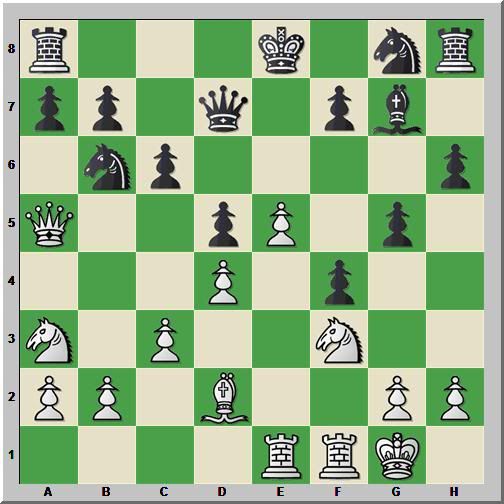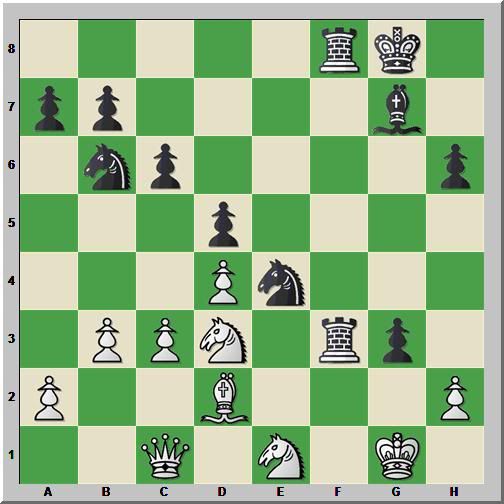My skills are far below Nunn and company, but I did write a pamphlet on Adolf Anderssen last year. Each year for the past several, I put on a brief chess camp for elementary chess players. In order to keep the camp fresh, and to give the participants something to take home, I change the theme each year. In 2010, the theme was "Attacking with Anderssen". I spent many hours poring through Anderssen's games looking for simple skewers, forks, decoys, and other tactical motifs in order to create problem sets. I also sought games to illustrate strategic themes, and other useful elements in Anderssen's chess career.
Last summer, the theme was "Studying with Smyslov" and we did some strong work on the endgame.
What follows was printed in the first three pages of instruction in the 2010 camp workbook.
Learning from Errors
Anderssen's first important match was against Tassilo von der Lasa. Von der Lasa was a Prussian diplomat who spent his spare time with chess. He accumulated an impressive library of chess books and also finished work begun by Paul Rudolf von Bilguer, editing Handbuch des Scachspiels (Handbook of Chess). The Handbuch became the dominant opening reference until the twentieth century.
Anderssen's six game match with Von der Lasa took place 1845-1846. Anderssen suffered some instructive losses in the beginning. As White, he favored the King's Gambit, an immensely popular opening in his day.
Match with Von Der Lasa
Game 1
Anderssen, A -- Von der Lasa, T [C38]
Breslau, 1845
1.e4 e5 2.f4 exf4 3.Nf3 g5
White to move

4.Bc4
For 4.h4 see Anderssen -- Von der Lasa, Berlin 1851 (also included in the workbook).
4...Bg7 5.d4 d6 6.c3 h6 7.Qb3?
7.O-O transposes into a line with some popularity, but that favors Black.
Black to move

White has pressure against f7 with the battery, but Black's kingside is secure. This error looks logical. However, on b3 the queen might become hemmed in by her own pawns--loss of mobility. She also could become vulnerable to attack.
7...Qe7 8.O-O Nd7 9.Na3
Thirty years later, Anderssen would try 9.a4 Anderssen -- Riemann, Breslau 1875.
9...Nb6 10.Bd2 Bd7 11.Rae1 Ba4 12.Bb5+ forced 12...Bxb5 13.Qxb5+ c6 14.Qa5
Black to move

The queen has no scope. Black's problem was not that 14.Qa5 was an error, but that this move is a consequence of a bad plan. 7.Qb3 brought the queen out where its vulnerability led to poor mobility. Even before then, Anderssen played moves that gave him minimal prospects of success.
14...Qd7 15.e5 d5
White to move

16.e6?
Anderssen offers a clever sacrifice that leads to a material imbalance, but one that favors Black. He should have hunkered down and tried to defend. Let Black play the aggressor. He might have sought better squares for his queen and the a3 knight.
16...fxe6 17.Rxe6+ Qxe6 18.Re1 Qxe1+ 19.Nxe1 Nf6
White to move

Black's pieces are better placed; the White queen has far less potential in this position than the Black rooks.
20.Nd3
Alternatives are worse: 20.Qc5 Ne4-+; 20.Qb4 Ne4 21.Bc1 O-O-O-+.
20...Ne4 21.Be1 O-O 22.b3 Rf7 23.Nc2 g4 Black's pawns are potent 24.Qa3 g3 25.Qc1 The misplaced queen arrives back in action too late. 25...Raf8 26.Bd2 f3 27.gxf3 Rxf3 28.Nce1 28.Ne3 might be better.
Black to move

Now, Black converts his advantage. He trades the greater mobility and coordination of his forces for a clear material advantage and an easy endgame.
28...Rf1+ Black has a forcing combination 29.Kg2 Nxd2 29...R1f2+ may be stronger 30.Qxd2 R1f2+ 31.Nxf2 Rxf2+ 32.Qxf2 gxf2 White is down a piece 0-1
Anderssen's positional error in the placement of his queen was as significant as tactical blunders. He squandered the initiative early and never recovered. In the middlegame, he initiated a forcing combination that gave his opponent a clear advantage.














No comments:
Post a Comment